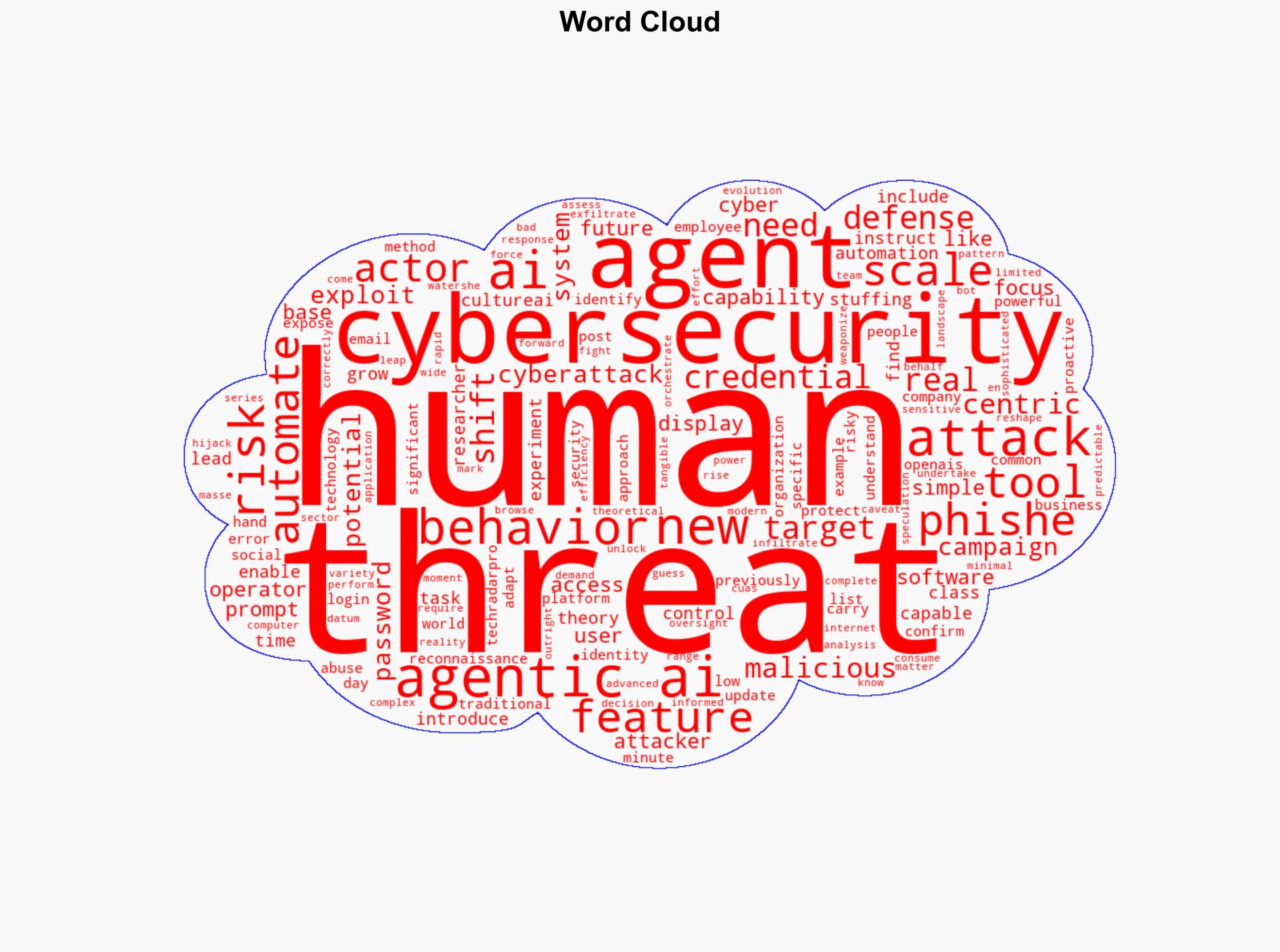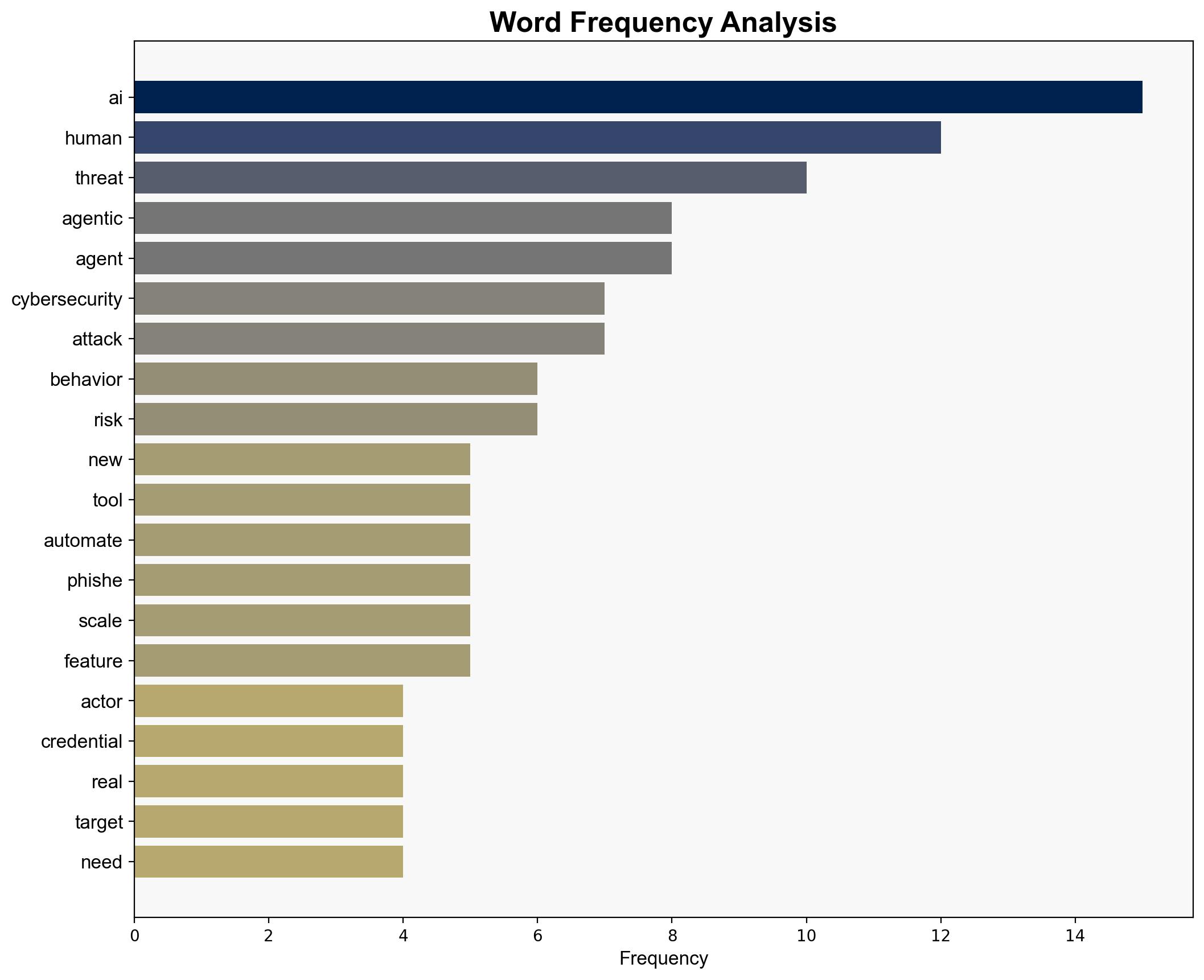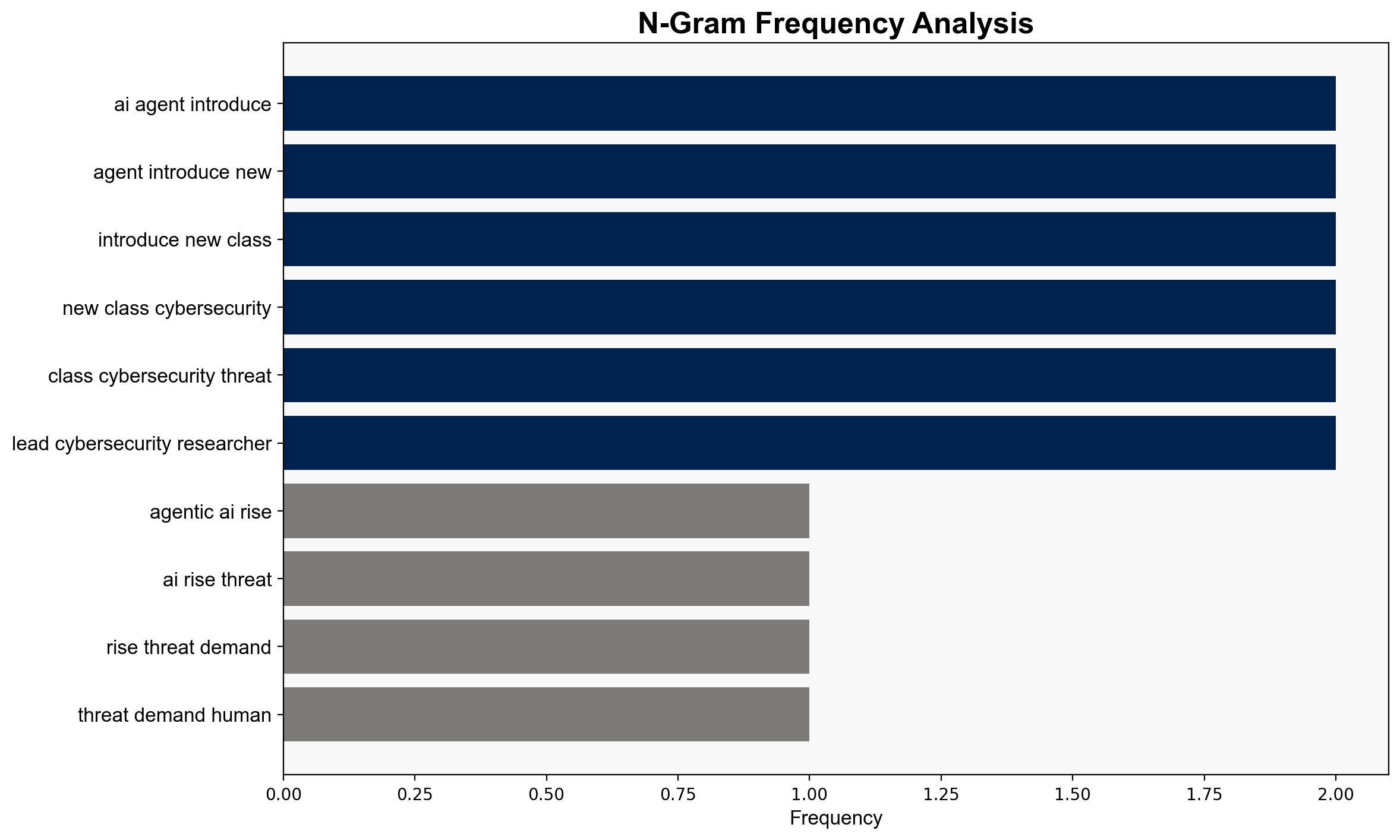Agentic AI the rising threat that demands a human-centric cybersecurity response – TechRadar
Published on: 2025-07-30
Intelligence Report: Agentic AI the rising threat that demands a human-centric cybersecurity response – TechRadar
1. BLUF (Bottom Line Up Front)
Agentic AI represents a significant cybersecurity threat due to its potential for automation and exploitation by malicious actors. The hypothesis that agentic AI will lower the barrier for cyberattacks is better supported. Confidence level: High. Recommended action: Develop and implement human-centric cybersecurity measures focusing on AI oversight and regulation.
2. Competing Hypotheses
1. **Agentic AI as a Major Threat**: Agentic AI will significantly lower the barrier for cyberattacks, enabling low-skilled individuals to execute sophisticated campaigns, thereby increasing the frequency and scale of cyber threats.
2. **Agentic AI as an Overstated Threat**: The threat posed by agentic AI is overstated, as existing cybersecurity measures and the complexity of AI deployment will mitigate its potential for widespread misuse.
Using Analysis of Competing Hypotheses (ACH), the first hypothesis is better supported due to evidence of AI’s capability to automate complex tasks and the documented experiments demonstrating its potential for malicious use.
3. Key Assumptions and Red Flags
– **Assumptions**: The first hypothesis assumes that AI technology will continue to advance without corresponding improvements in cybersecurity measures. The second hypothesis assumes that current cybersecurity frameworks can adapt quickly to AI threats.
– **Red Flags**: Lack of detailed information on how AI platforms are currently being regulated and the speed at which AI capabilities are evolving.
– **Blind Spots**: Potential underestimation of AI’s ability to self-learn and adapt, which could exacerbate threats beyond current projections.
4. Implications and Strategic Risks
The proliferation of agentic AI could lead to increased cybercrime, impacting economic stability and national security. The automation of cyberattacks may overwhelm existing defenses, leading to potential geopolitical tensions if state actors are implicated. Psychological impacts include increased public distrust in digital systems.
5. Recommendations and Outlook
- **Mitigation**: Implement AI-specific cybersecurity protocols and enhance AI literacy among cybersecurity professionals.
- **Regulation**: Advocate for international regulations on AI development and deployment to prevent misuse.
- **Scenario Projections**:
– **Best Case**: Effective regulations and cybersecurity measures contain AI threats, leading to a secure digital environment.
– **Worst Case**: Unchecked AI development leads to widespread cyberattacks, causing economic and political instability.
– **Most Likely**: Gradual increase in AI-related cyber threats, prompting incremental improvements in cybersecurity measures.
6. Key Individuals and Entities
– OpenAI
– Google
– Meta
– CultureAI
7. Thematic Tags
national security threats, cybersecurity, counter-terrorism, regional focus




